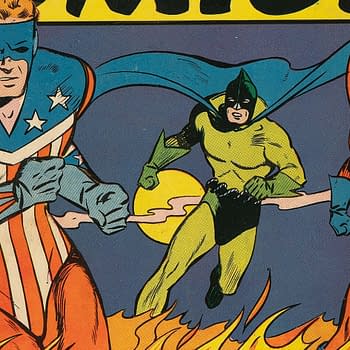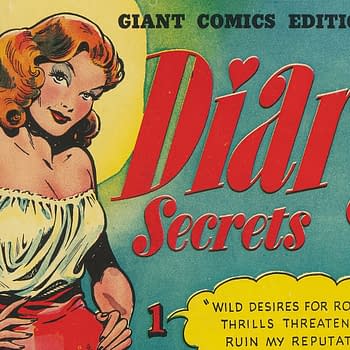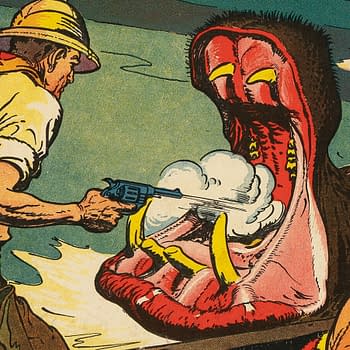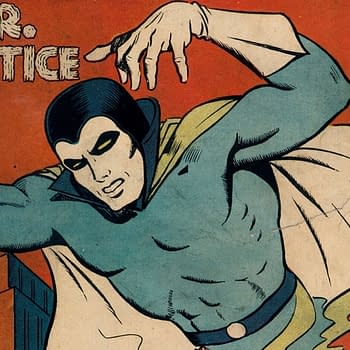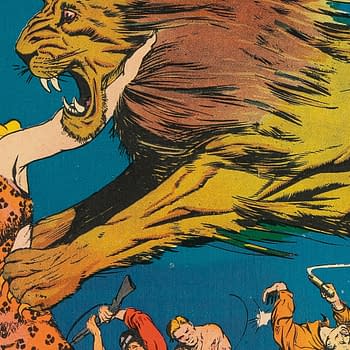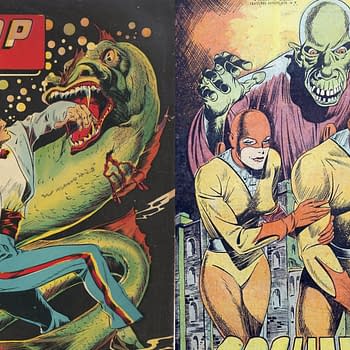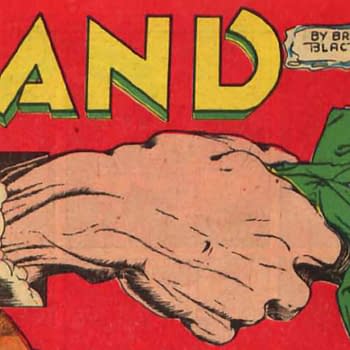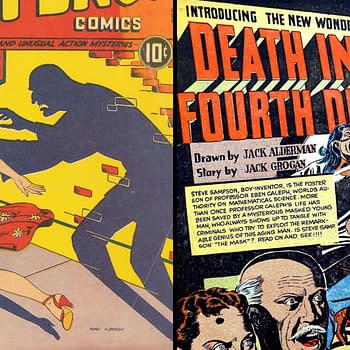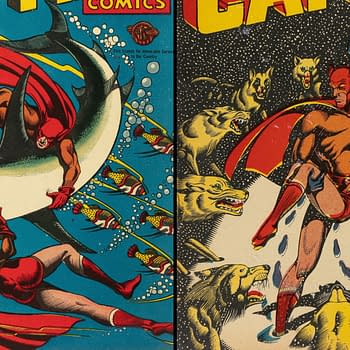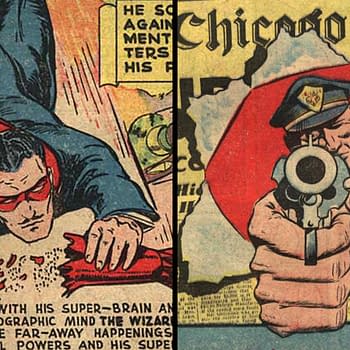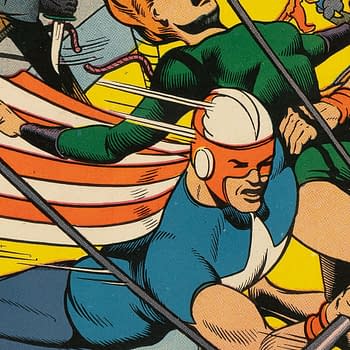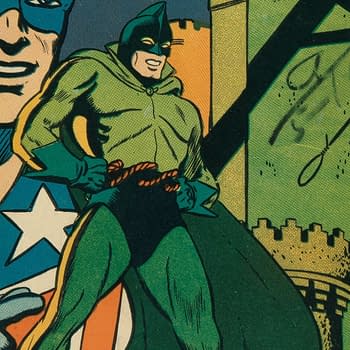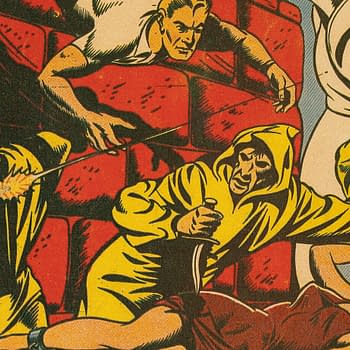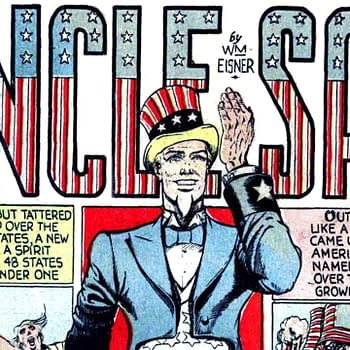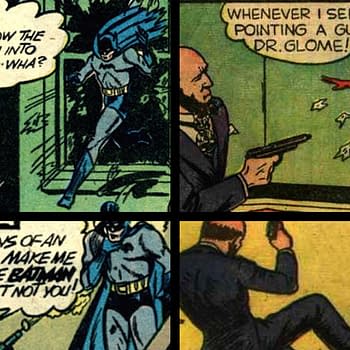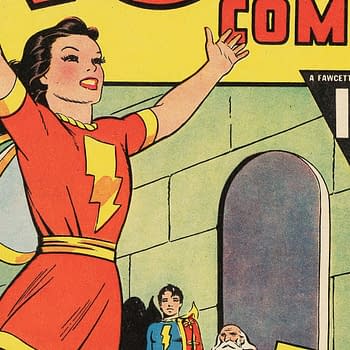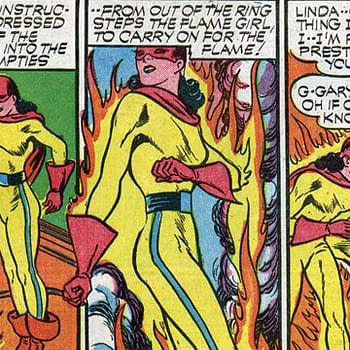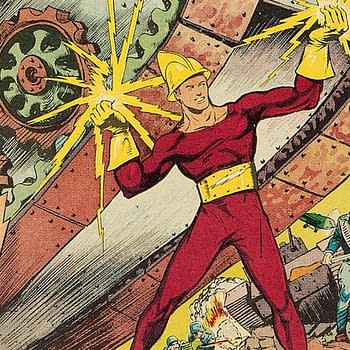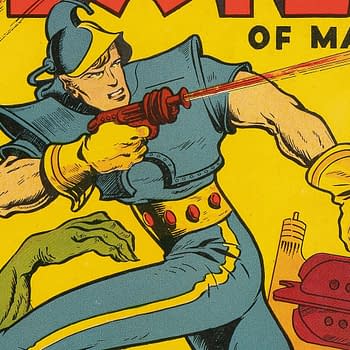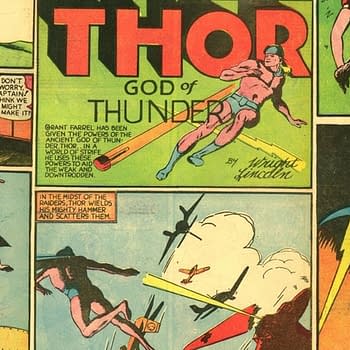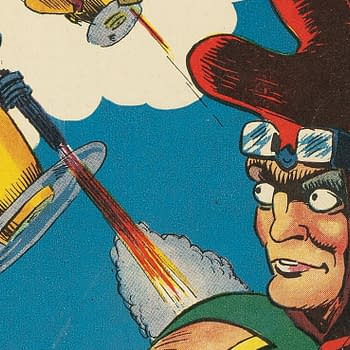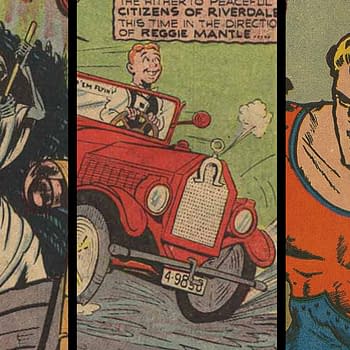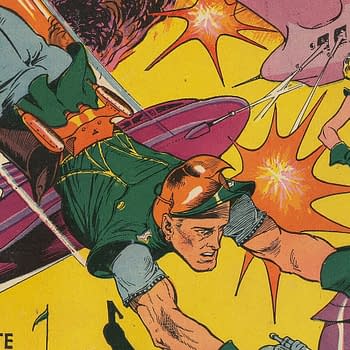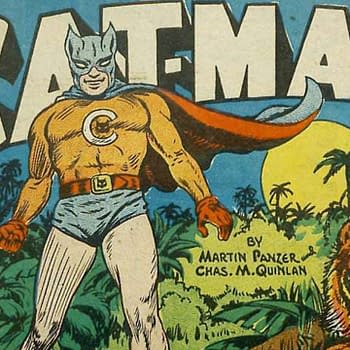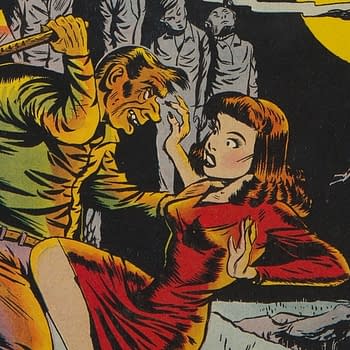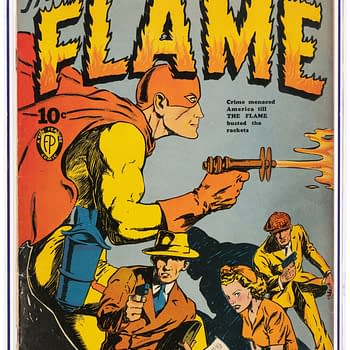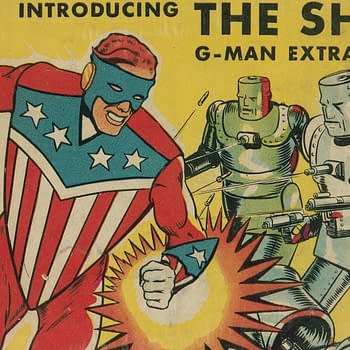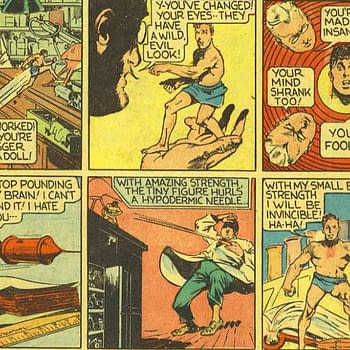One of the most potent symbolic war comic book covers of the WWII era, Irv Novic's Pep Comics #20 is a visceral gut-punch of Golden Age superheroics.
Mark Seifert Archives
When you think of comic book romance, you think of this. Giant Comics Editions #12 Diary Secrets is one of comics history's most iconic covers
Adventure Comics #37 includes contributions from some of the foundational creators of the Golden Age at one of the industry's most important moments.
The spirit of Prince James, heir to the throne of 18th century England, Mr. Justice was unleashed into the modern world in Blue Ribbon Comics
Jumbo Comics #15 features one of the best early Sheena covers by Will Eisner, shown off to spectacular effect on this CGC 9.6 copy.
The rare Scoop Comics #2 features some wild superhero/horror/science fiction content, a spectacular cover, and a villain named Dr. Strange.
Speed Comics #13 is an early Harvey comic that features the debut of Captain Freedom and a bizarre character named The Hand.
Suspense Comics is a highly regarded Golden Age series, and issue #2 features a cover by Nina Albright and a story Death in the Fourth Dimension featuring The Mask.
L.B. Cole's background in commercial art and label design served him well in his distinctive approach to covers, such as on the coveted Cat-Man Comics series.
A stand-out example of pre-Archie MLJ, Top-Notch Comics #3 features the superheroics of The Wizard, plus stories by Jack Cole and Otto and Jack Binder.
The 1942 debut of the Sheena series from Fiction House features a cover by underappreciated Golden Age artist Dan Zolnerowich.
With MLJ's comic book line changing in the wake of the introduction of Archie, Blue Ribbon Comics ended with Captain Flag in issue #22.
Vowing to take revenge for the murder of his brother The Comet, The Hangman's chilling debut is chronicled in Pep Comics #17.
Suspense Comics #3 may get all the attention, but Suspense Comics with L.B. Cole covers are worth Pre-Code Horror collectors' time.
American icon Uncle Sam became a comic book superhero in Quality Comics title National Comics, adapted for this purpose by Will Eisner.
After successfully suing Victor Fox over Superman similarities, DC Comics did it again over copying Batman & Robin in Mystery Men Comics.
Mary Marvel debuted in the Wow Comics title about three weeks after her first appearance in Captain Marvel Adventures #18.
With the Flame seemingly near death, Linda Dale vows to continue his legacy, becoming Flame Girl in Wonderworld Comics #30.
ABC gave a series order for Scrubs creator Bill Lawrence's revival series, with Zach Braff, Donald Faison, and Sarah Chalke set to return.
Shock Gibson debuted in Speed Comics #1 by going up against a would-be dictator with an army of zombies at his disposal.
Dick Briefer's Rex Dexter of Mars was meant to be a multi-media star, with aspirations for film, radio, merchandise, and syndicated strips.
Thor, God of Thunder from Fox Feature Syndicate's Weird Comics was one of the most interesting comic book takes on the character.
The obscure character Rebo from "Saturn Against Earth" published in the U.S. in Future Comics was eventually used in Donald Duck adventures.
Archie was a rather startling contrast with the very serious MLJ superheroes also featured in Jackpot Comics.
Lou Fine's Rex Dexter cover for Mystery Men Comics #2 is an early example from an artist who helped define science fiction art during comics' Golden Age.
Artist/writer Charles Quinlan transformed the character Cat-Man with a series launch that is highly regarded by Golden Age collectors today.
Crime Does Not Pay #33 is one of the most-collected issues of the most notorious series in comic book history.
A combination of superheroics, super-science and horror makes Fox Features Syndicate's The Flame one of the publisher's best characters.
The historic Pep Comics #1 introducing the Shield, America's first patriotic hero and launches a legendary comic book series.
Debuting in Quality Comics' Feature Comics #27 by Will Eisner, Doll Man is considered the Golden Age's first shrinking superhero.



